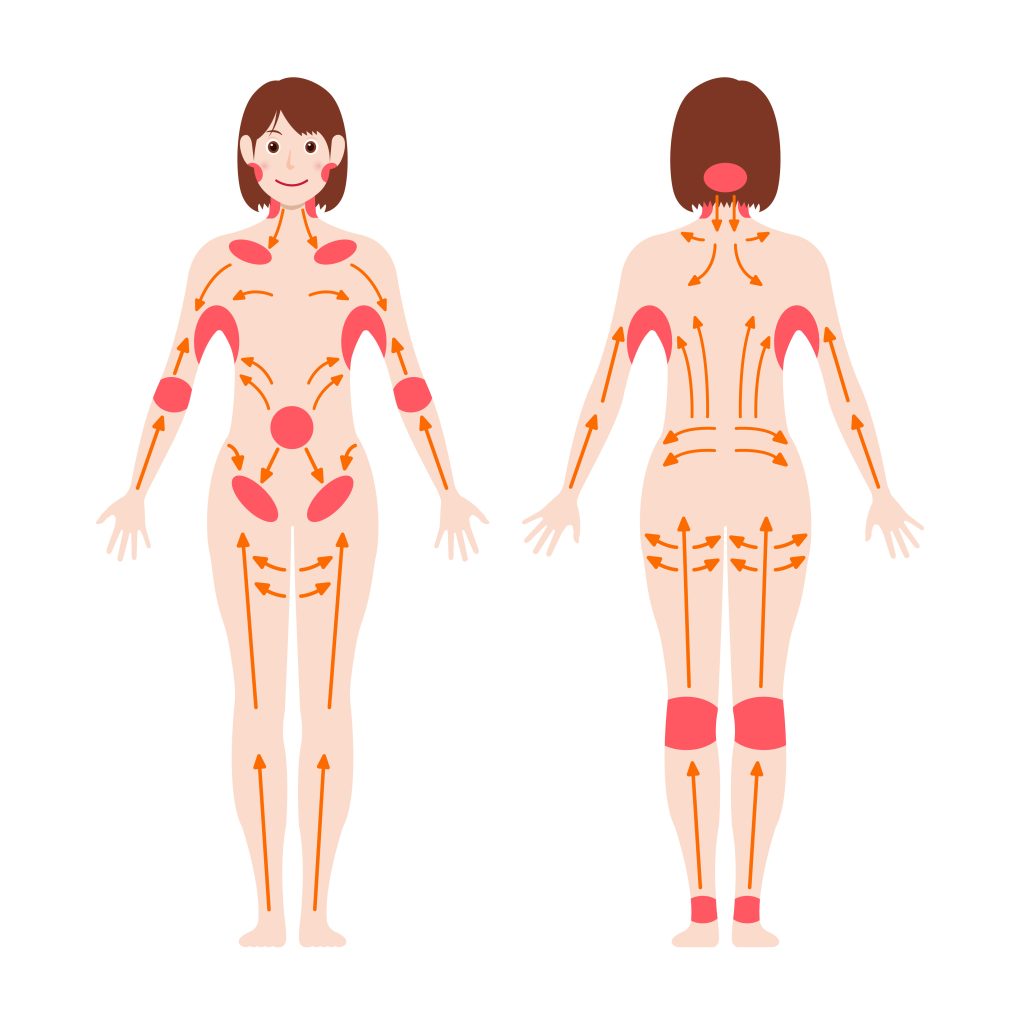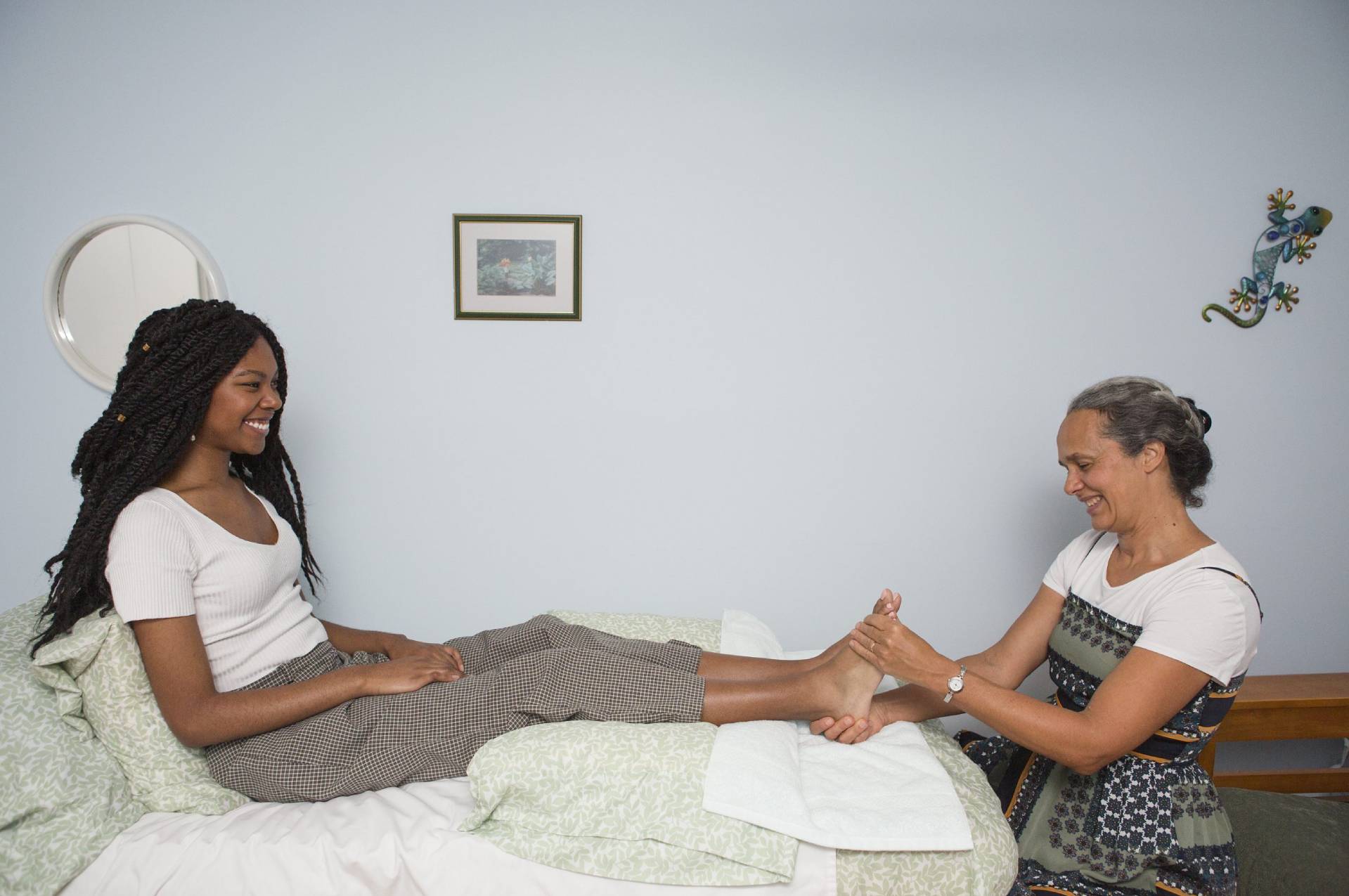As a practitioner, I’ve been using lymphatic drainage therapy with clients for over a year now. It’s an exciting field to be in. The applications of lymphatic drainage are numerous. However, I feel that it is an underused therapy, possibly because both the medical community and the public are unaware of developments in this field that allow us to apply lymphatic drainage to specific structures and organs throughout the body.
I’d like to help you understand the breadth and depth of this therapy. It’s so much more than treating lymph insufficiency which leads to swelling (lymphedema), although that is a major part of who we can help. I’ll also highlight 3 scenarios where lymph drainage can have a significant impact for improving health outcomes, and some interesting facts about the lymphatic system.
First, a brief explanation of the lymph system and lymphatic drainage therapy (LDT) may be helpful. Our lymphatic system is a vital system of delicate vessels which returns excess fluids and proteins (that have seeped out of the blood capillaries to nourish cells) to the circulatory system. As those fluids and solids are collected, cellular waste and debris and toxins are also being collected. On the long, circuitous route back to the heart, this fluid (the lymph) passes through many checkpoints (the lymph nodes) where our immune cells examine the contents of the lymph and are able to identify imposters (viruses, bacteria, parasites, mold, etc). The lymph system has a directionality in each part of the body (under the skin, in the muscles, the organs, around and in the skeleton, around the deep blood vessels, and around the nerves). There are literally little rivers of lymph running at various depths, and in different directions throughout the body.
Manual lymphatic drainage supports the functions of this important lymphatic system by stimulating the flow of lymph with gentle rhythmic strokes. Dr. Bruno Chikly, is the creator of the therapy that I am trained in. His specific form of lymph drainage is termed “Lymphatic Drainage Therapy” and differs from traditional lymph drainage (termed Manual Lymphatic Drainage) in that it adds a sensitivity of touch and “listening skills”. Dr. Chikly is a medical doctor and osteopath and has also trained in virtually every kind of manual therapy that exists, including craniosacral therapy. He discovered that he could feel the flow of lymph and map the flow of the ‘rivers of lymph’ at various depths in the body. These listening skills can be taught and enable practitioners to feel and affect the specific rhythm, direction, depth and quality of the lymphatic flow. As you can well imagine, this specificity greatly enhances the effectiveness and efficiency of the drainage.
I am also trained in Reflexology Lymph Drainage (RLD) which was developed over the last two decades in Britain by reflexologist Sally Kay. (See Research on Reflexology Lymph Drainage for Lymphedema and PDF poster) With a lymphedema client, I use primarily RLD, and also use LDT to fine tune the flow of lymph. RLD is done on the feet using gentle repetitive strokes, working the lymphatic system for 45 minutes each session. With swelling in arms or legs, I measure the limbs before and after treatment to calculate the fluid lost in each session.

Some Key Benefits of Lymphatic Drainage
- Aids in detoxification (reduce allergens, clear away cellular waste and foreign toxins)
- Improved circulation (helpful for venous insufficiency as well)
- Softens tight tissues (I use LDT in my Posture & Movement Therapy to help with postural change)
- Aids in releasing trapped emotions
- Pain reduction
- Speeds healing (reduces swelling after injury or surgery)
- Relaxation and parasympathetic nervous system activation
- Improved immune function
Speciality Areas for LDT
Almost every organ of the body can be ‘lymphed’ to assist in clearing congestion and toxins.
For example, the spleen, kidneys, colon, small intestine, liver, lungs, organs of senses (eyes, ears, nasal cavity and oral cavity), breasts, uterus, bladder and prostate. The applications are too numerous to mention here, but easily conceived when you realize that those areas can be strengthened by increasing lymph flow, bringing more nutrients and deep cleansing.
Highlighting Three Applications of LDT
- Pre and Post Surgery – drain the tissues prior to surgery; one to two sessions recommended two or three days before surgery. Predrainage is especially helpful with esthetic surgery. After surgery, assist in tissue regeneration and in healthy redirection of lymph. Of course, with any surgery where lymph nodes are removed, lymphatic drainage is recommended to ensure the system works optimally. (Link to article below)
- Post Radiation – radiated tissues don’t drain the same; help the body to be as efficient as possible during and after radiation sessions are completed.
- Dry Eyes, Dry Mouth syndromes – it’s been gratifying to help clients with low salivation, and low tear production with a combination of LDT and craniosacral therapy.

Three Interesting Facts about the Lymphatic System
There are 2 distinct parts to the lymphatic system: superficial and deep. In the limbs, 70% of the lymph flow is superficial (just under the skin). Superficial lymph flow is NOT affected by exercise. The deep circulation is in the muscles and in the organs; these areas are stimulated by muscle contractions (breathing and exercise).
Contrary to common belief, there is a built in muscular pumping action in the lymphatic system, called lymphangions. The lymphangions are found in all but the smallest lymphatic vessels and they produce peristaltic waves of contractions to propel the lymph forward. When stimulated by manual therapy, these tiny muscles can increase the flow by twenty to thirty times.
Deep tissue massage damages the delicate tiny collector vessels of the lymphatic system. It takes a few days for them to regenerate. Another circumstance where ‘less (pressure) is more’!
If you have any questions about how LDT or RLD can benefit you personally, please reach out to me (Anna Crandlemire). I look forward to helping you with your overall wellness.
Applications of Pre- & Post-Surgical Lymph Drainage Therapy by Bruno Chikly, M.D., and Alaya Chikly, CMT: Download
Research on Reflexology Lymph Drainage for Lymphedema on Researchgate.net: Sally Kay’s research works | WWF United Kingdom and other places



